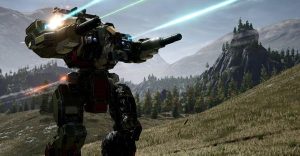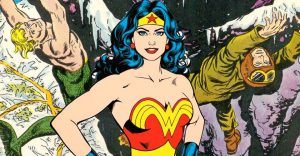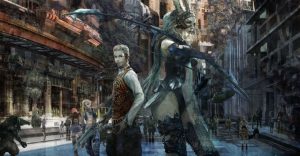Naren Shankar Interview: The Expanse Season 6
The Expanse season 6 opens in the midst of a system-wide war between the combined powers of Earth and Mars and Marco Inaros’ Free Navy representing the Belt. The first two episodes emphasize the toll the struggle has taken on the series’ main characters, as James Holden and the crew of the Rocinante look to make a difference in the raging conflict. The Expanse, based on the book series of the same title written by Ty Franck and Daniel Abraham under the pen name James S.A. Corey, both replicates and deviates from its source material thus far in its six-episode final season. Showrunner and executive producer Naren Shankar, who has worked alongside Franck and Abraham through the entirety of The Expanse‘s run on Syfy and Prime Video, faced numerous key decisions while adapting book 6 Babylon’s Ashes to a shortened conclusion.
Screen Rant spoke with Shankar about the writing process behind The Expanse season 6 episodes 1 and 2.
Screen Rant: First I want to talk about those X-ray bonus scenes. How did those come to be and how did you decide what to include in them?
Naren Shankar: Amazon had been wanting to do them, I think we started talking about them as far back as season 4 and we couldn’t work it out logistically. We got on it very early in season 6 and Julianna Damewood and Glenton Richards — two of our staff writers — we put them at the helm of them and Daniel Abraham supervised them. We came up with this idea of knitting them together philosphically. It was like this Belter philosophy of one ship, this idea that the ship is an organism and every little piece of it has to help every other piece or you don’t survive. It gave us this opportunity to do what I look at as one-act character plays that fill in emotionally where people are at in between episodes, and I like how they live in the space between the episodes.
In episode 1 — the Drummer/Naomi one, they’re on the way to get rid of Michio, which you see in the episode. Even if you don’t watch them, you don’t lose too much, but if you watch them, you gain. The one at the end of episode 2, Avasarala is on the UNN and Martian fleet as they’re heading toward Ceres, so you know what’s about to happen there. Again, it’s about the strain and the weight of responsibility that’s on Avasarala’s shoulders. All of them are like that to one extent to another. They’re really just illuminating character pieces about the individuals on the show.
I want to talk about the Drummer one specifically because I find it so cool how Naomi was sending her these messages back in season 4 and season 5, but we weren’t aware of that. What was the intent of revealing that now in terms of further contextualizing their relationship?
Naren Shankar: We started talking about this one and I think I asked the question, “What have they sent to each other?” Since season 5, you can track it all the way back to season 3, but when you think about it, Drummer makes this incredibly heroic decision to put her lives on the line to save the Roci and by extension, Naomi, and it really costs her. Her family breaks up, one of them is executed by Marco, and then the war happens. So, Naomi’s somewhere else, Drummer’s an outlaw, the only way they can talk is not in person, they can only be exchanging messages — what would they say?
Surely, Naomi said “thank you” to some extent or another. You sort of roll it back and what have they been talking about? It gave us a chance to go back to that time when they were happy on the Behemoth in season 3 and Naomi’s giving a happy birthday song, and then she’s on Ilus and they had an argument to set the different opinions of how Belters would feel about living on a planet in season 4, and then at the end of season 5, saying “thank you for what you did.” It was an interesting way to wind the clock back about their relationship, and you’ve seen the whole season, right?
Screen Rant: Yes.
Naren Shankar: So you know what we’re building to in episode 5 — which is really that moment. With these X-rays, it was a great way to bring a little bit more underneath that, so when you’re watching it you can get a little bit more out of that last scene.
Speaking of Naomi, I love that scene in episode 2 where she freezes up and has that flashback of jumping off the Pella in season 5. What was your approach, as writers, to representing the trauma that she’s still facing in season 6?
Naren Shankar: That was something we were really conscious of at the beginning of the season. The death of Alex, people who have been at war, the strain of that, we didn’t want to lose all of those incredibly hard moments that Naomi had gone through in season 5 and just say, “That’s all in the past.” It hangs over everybody. She hasn’t dealt with it. Little pieces of it are coming out, even how she’s angry about Clarissa just being there, even though Clarissa’s not doing anything to her.
Here was a great opportunity and I think it’s something that we discovered as we were talking about the specifics of the action sequences. Here’s a moment that really feels like jumping off of a ship and isn’t that going to take her back? It’s just a momentary hesitation, but it was a great way to touch back into that narrative and also key it up for later in episodes 3 and 4 when Holden and Naomi have to confront a little bit more about what this is.
It had nice elements that attached to it, like Clarissa trying to prove herself by impulsively jumping out the door and taken Naomi’s part even though she’s breaking the chain of command. It was a nice moment to bring a lot of emotion into the core of a big action scene, and that’s always the best way to do it.

Going off of that, I was so impressed with the sheer number of really impactful character moments in season 6. How did you go about incorporating those scenes and finding a balance with all the action?
Naren Shankar: I often like to talk about the masters of a great action like James Cameron, for example. It is this virtuous feedback when you have, you know, ‘action reveals character and character drives action.’ The masters do that. It is a constant emotional reveal as you drive through it. When you can do that, you get that great balance. Even in the midst of an action sequence, you actually care what the people are going through, not just ships blasting each other and zooming around. We try not to ever do a gunfight just for the sake of a gunfight. They don’t really interest me very much. But when you can bring these elements into it, it suddenly gets very interesting.
In the first two episodes, there are already a few deviations from the books like Filip shooting his friend instead of a security guard and Monica taking on Holden’s role from the book with the project she’s doing. For you, Ty, and Daniel, what tends to motivate the decision to change something from the books?
Naren Shankar: It was a way of upping the stakes for Filip. Killing some rando security guard felt weirdly cruel. If you don’t establish who that person is, you as an audience member don’t care about them. It serves the same function in the season as it did in the book. I think it was Dan Nowak who was talking about that storyline. He said, “We should really talk about the guy that Filip kills and how much more interesting is it if it’s somebody that Filip likes and somebody who’s there for Filip?” It says more about the turmoil, and the anger, and the uncontrollability of it for him, and it is shocking. Just shooting a guy in a bar fight had less interesting elements and it ripples out. He’s trying to make up for it by sending something to his parents and he can’t even take responsibility for it even when he sends the message.
The Monica storyline with Holden, that was one of those things that happened in the book that we just weren’t able to do because of the canvas. But by putting her with Avasarala, it let us attack the same ideas. We had initially started talking about the season as a 10-episode season and then when we were told we were only getting six episodes, we had to reconfigure some elements. One of the themes that Ty and Daniel talk about is solving a big problem like tribalism, race hatred, and war, it’s not just one thing that has to happen. It has to be thousands of people everywhere all doing little good things.
We had storylines kind of like in the book where we focused on Prax and Anna, individual episodes of big stories. Those sort of came out of it. When we had Monica with Avasarala talking in this way, we realized, “Here’s a way to touch that idea,” putting that notion of ‘killing people is wrong and bad’ into the world and talk about that winning a war requires you to win politically as well. It’s not just battle after battle. You get little pieces of that. You see the ripple effect of Monica putting those videos out there into the world. It has an effect back with Anna, with Prax, so it was a way of dealing with that storyline in a slightly different way driven by the fact that we had a somewhat smaller canvas to work on.
Were there any other difficult decisions you, as a group of writers, had to make in terms of cutting material from the books?
Naren Shankar: I think that was one of the big ones. What ended up happening with them, because of how we did Drummer’s story in season 5, we actually borrowed a third of the storyline of Michio Pa in book 6, but it sort of folded into Drummer’s character. So, that had already been done in season 5. There are other changes like there’s a whole runner on Medina Station with the guys installing the guns on the ring station in the books. The Strange Dogs storyline kind of replaces that because they don’t go there in the novel, so those were the biggest changes from the novel.
The death of Alex is another one of those big changes, so you faced the challenge of having to get the Roci a new pilot in season 6. Was Holden always the obvious solution or did you talk about other characters as a possibility?
Naren Shankar: We actually talked about other characters. They’re there in the book. They have sort of a different crew. The more we started talking about it, the more we realized, here’s a great way to put our people at the focus of it without introducing tons and tons of new characters. And there are good reasons for it. Clarissa’s on board the ship. Holden doesn’t want to make her public. By having Holden in that pilot’s chair, it reinforces the loss of who’s not in the pilot’s chair. That loss hangs over everybody in the show in a very explicit fashion. For the first time it’s Holden 1o0 percent taking on the mantle of captain. He’s not a reluctant hero. He is saying “We’re going to do this” and that’s kind of new for him. So, it was an opportunity to focus all the drama on our core cast.

Another thing I want to mention is that I love the inclusion of Nico Sanjrani as a non-binary character. With a cast as diverse as this one is, what does it mean to you to have so many people feel seen in the stories you tell?
Naren Shankar: That all comes back to Ty and Daniel. Just having people be seen in the story says “We all make it out there,” as Daniel likes to say. It’s one of the things I love about the books.
With the door open for so much more after season 6, what other Expanse spinoffs would you like to see in the future?
Naren Shankar: There are three more books. That’s really the key. It’s a great epic that’s out there, so there’s a nice satisfying ending at the end of season 6, but hopefully we’ll get to make the rest of it because the story has one more big, cool act to go. Alcon Television has talked about doing it. There are no firm plans for anything yet, but it’s definitely something we would all love to be apart of and I think it would be amazing to be able to do that with a series like this. It could be fun. Hopefully we’ll get a chance.
The Expanse releases new episodes Fridays on Prime Video.
About The Author

















